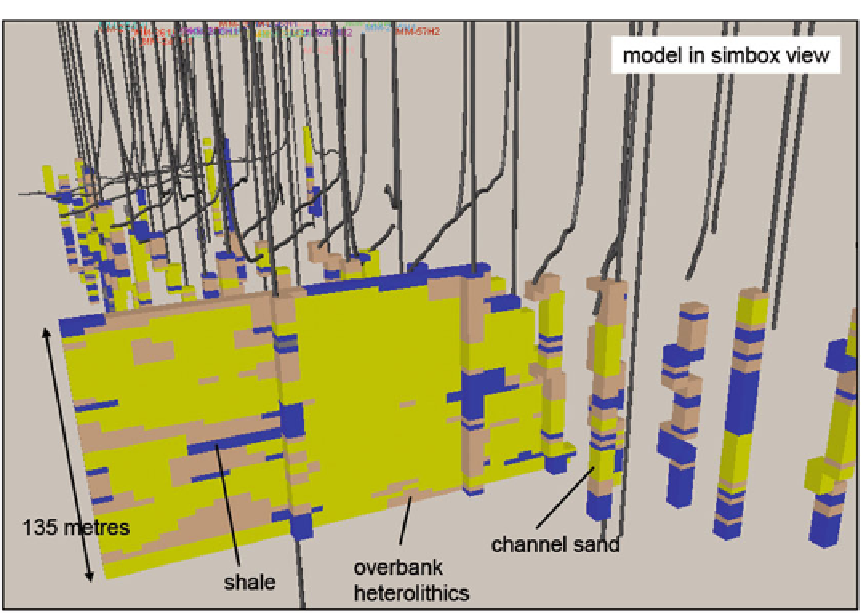Geoscience Reference
In-Depth Information
Fig. 2.34
'Funnelling' - over-concentration of objects
(channels,
yellow
) in between wells which have lower
concentrations of those objects; a result of inconsistencies
between well data, guidance of the model statistics and the
model concept (Image courtesy of Simon Smith)
Moreover, it is highly unlikely that the ele-
ment proportions seen in the wells truly represent
the distribution in the subsurface as the wells
dramatically under-sample the reservoir. It is
always useful to check the model element
distributions against the well proportions, and
the differences should be explainable, but differ-
ences should be expected. The 'right' element
proportion is the one which matches the underly-
ing concept.
The following list of observations and tips
provides a useful checklist for compiling body
geometries in object modelling:
1. Do not rely on the default geometries.
2. Remember that thickness distributions have to
be customised for the reservoir. The upscaled
facies parameter includes
measured
thickness
from deviated wells - they are not strati-
graphic thicknesses.
3. Spend some time customising the datasets and
collating your own data from analogues.
There are a number of excellent data sources
available to support this; they do not provide
instant answers but do give good guidance on
realistic
preserved
body geometries.
4. The obvious object shape to select for a given
element is not always the best to use. Channels
are a good example of this, as the architecture of
a channel belt is sometimes better constructed
using ellipse- or crescent-shaped objects rather
than channel objects
per se
. These body shapes
are less extensive than the channel shapes,
rarely go all the way through a model area and
so reflect the trend map inputs more closely and
are less prone to the 'bull's eye' effect.
5. There may be large differences between the
geometry of a modern feature and that pre-
served in the rock record. River channels are a
good example: the geomorphological expres-
sion of a modern river is typically much
narrower and more sinuous that the geometry
of the sand body that is preserved. This is

